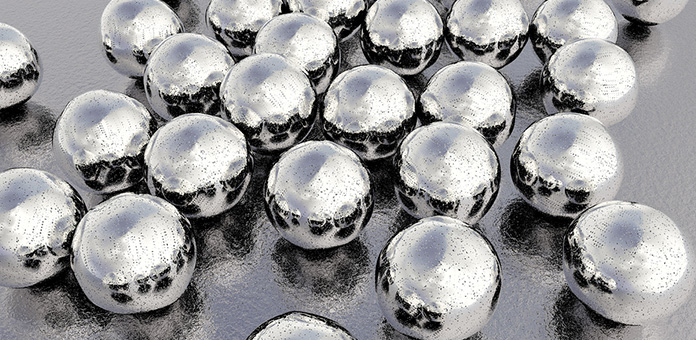
Determining the long-term prices of any commodity involves assessing supply and demand factors for that item. For buyers of silver, the continually growing demand for the white metal in the face of shrinking supplies is an indicator of future price increases. The developing field of silver nanoparticles is just one area of technology that is creating demand for silver that is not yet fully priced into the current market. 1
Unique Properties
Silver is generally considered the second most important precious metal after gold. However, in certain aspects silver has no equal. When it comes to conducting heat and electricity, silver has no peers. It is also the best and most efficient reflector of light. 2 These and other characteristics, such as its antimicrobial properties, make silver the primary choice for a growing and wide range of technologies. 3
While the price of silver often results in the use of less ideal materials, such as copper, it is the only acceptable option in many situations. Aside from jewelry and money, photography created the first mass-market use of silver. Photovoltaic technology utilitizes the conductivity of silver and has created massive demand in the production of solar energy panels and equipment.
Silver Nanoparticles
The science of nanoparticles is one of the newest fields creating potentially significant demand for silver. A nanoparticle is a submicroscopic sized unit of matter, measuring between 1 and 100 nanometers. 4 Silver nanoparticles have numerous applications in technology and medicine.
Silver Nanowire
Silver nanowire-based transparent conductors are one application of silver nanoparticles. The superior conductivity of silver makes it the optimal choice for use in miniature electronic devices, such as watches, smartphones, and robotics. Silver’s transparency also makes it the ideal material for use in liquid-crystal displays, OLEDs, and touchscreen devices.
While price constraints have limited the use of silver in favor of indium tin oxide (ITO), new applications and economics are driving the choice of the white metal instead. 5 The exceptional aspect ratio and conductivity of silver nanoparticles are also behind the replacement of ITO in many fields, allowing silver nanowire to gain major market share. For example, the touchscreen is rapidly becoming the standard interface of many devices and computers, and silver nanoparticles are a key component in the best of those screens.
Wearable Technology
The expanding use of wearable technology is also dependent in many cases on the use of silver nanoparticles. These are garments and devices that are worn by users to provide continual protection and data input to monitor everything from body temperature to heart regularity. 6
Biological and Chemical Sensors
The use of silver nanoparticles also incorporates fields as disparate as conductive inks, fillers, and pastes, antimicrobial coatings for textiles and other products, molecular diagnostics, and photonic devices. An increasing number of biomedical applications rely on the use of silver nanoparticles and their consistent release of silver ions at low levels for protection against infection.
Seize the Opportunity to Invest in Silver Now
While many of these nascent technologies are too small to impact the overall demand for silver, they will collectively represent a major source of new demand in the coming years. It is these factors that cause many long-term investors and buyers of silver to see 2017 as a good time to buy silver.

